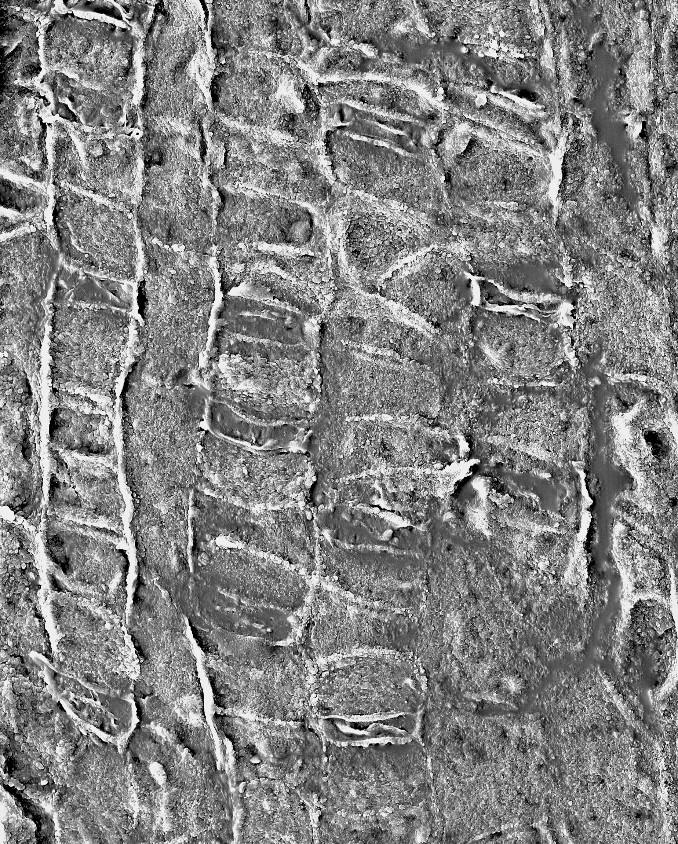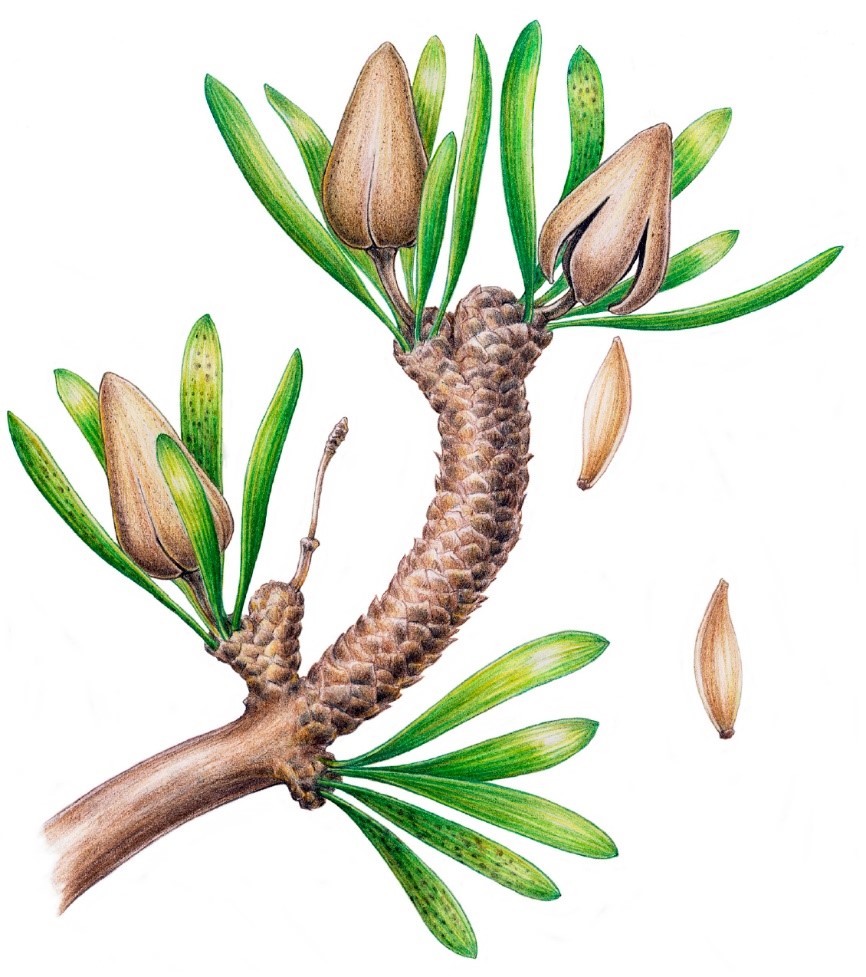Living seed plants consist of Cycadales, Ginkgoales, Coniferales, Gnetales and angiosperms. The origin and phylogenetic relationships of these five group of living seed plants are poorly understood, in large part because of very imperfect knowledge of extinct seed plant diversity.
Recently, Dr. SHI Gongle from Nanjing Institute of Geology and Palaeontology, Chinese Academy of Sciences and colleagues from US, Mongolia, Japan and Russia studied three-dimensionally preserved, lignite plant fossils from the Early Cretaceous of Mongolia. Leaves of Podozamites and Pseudotorellia are dominant in the Early Cretaceous lignite floras of Mongolia.
Podozamites and Pseudotorellia are common in Late Triassic to Early Cretaceous floras from Laurasia. Both are typically strap-shaped with parallel veins, and the two genera are often confused with each other if the leaves are found detached and their cuticles are not preserved. Podozamites is thought to be the leaf of a voltzialean conifer, but its epidermal features are poorly understood because its cuticle is extremely delicate. Pseudotorellia is commonly thought to be the leaf of an extinct ginkgoalean. It has a thick cuticle with stomatal complexes that have been described as haplocheilic.
In one study the leaf morphology, cuticle, and stomata of Podozamites and Pseudotorellia are described based on excellently preserved material from the Early Cretaceous of central Mongolia. Podozamites harrisii has transversely oriented, paracytic (probably syndetocheilic) stomata that are regularly arranged in longitudinal files. Pseudotorellia resinosa and Pseudotorellia palustris have scattered, longitudinally oriented stomata in which the two guard cells are sunken and surrounded by 2–5 specialized lateral subsidiary cells and 1–3 unspecialized polar cells.
Association evidence and similarities in cuticular structure suggest that Po. harrisii was produced by the same plant as the seed cone Krassilovia. The distinctive stomatal pattern of Po. harrisii and Krassilovia, is also seen in some species of Swedenborgia and Cycadocarpidium, suggesting these plants may all belong to the same natural group. Cycadocarpidium, Krassilovia and Swedenborgia have previously been treated as conifers, but their transversely oriented, paracytic stomata hint instead at a possible relationship with Bennettitales and Gnetales.

Transversely oriented, paracytic stomata of Podozamites
Pseudotorellia has been long considered a ginkgoalean leaf based on its venation and features of the cuticle. Like extant Ginkgo, Pseudotorellia has two veins that enter the leaf base and stomata that are sparsely scattered in ill-defined stomatal bands on the presumed abaxial surface. Pseudotorellia was also thought to be produced by the same plant as the ovulate organ Umaltolepis Krassilov based on their repeated association, similarities in the structure of their cuticles, and similarities between the scale leaves at the base of the stalk of Umaltolepsis and the scale leaves on dwarf shoots that bore Pseudotorellia.
However, Abundant new material from the Early Cretaceous of Mongolia shows that Umaltolepis is a seed-bearing cupule that was borne on a stalk at the tip of a short shoot. Each cupule is umbrella-like with a central column that bears a thick, resinous, four-lobed outer covering, which opens from below (Fig. 2). Four, pendulous, winged seeds are attached to the upper part of the column and are enclosed by the cupule. In spite of the similarity of Pseudotorellia leaves to those of living Ginkgo. Umaltolepis seed-bearing structures are very different from those of Ginkgo but very similar to fossils described previously as Vladimaria.
Umaltolepis and Vladimaria do not closely resemble the seed-bearing structures of any living or extinct plant, but are comparable in some respects to those of certain Peltaspermales and Umkomasiales (corystosperms). Vegetative similarities of the Umaltolepis plant to Ginkgo, and reproductive similarities to extinct peltasperms and corystosperms, support previous ideas that Ginkgo may be the last survivor of a once highly diverse group of extinct plants, several of which exhibited various degrees of ovule enclosure.

Reconstruction of Umaltolepis mongoliensis.
The two studies were recently published in Journal of Systematic Palaeontology and PNAS. The studies have benefited from Professor ZHOU Zhiyan from NIGPAS and supported by the NSFC, the Youth Innovation Promotion Association, CAS and Nanjing Institute of Geology and Palaeontology.
Reference:
Download:
